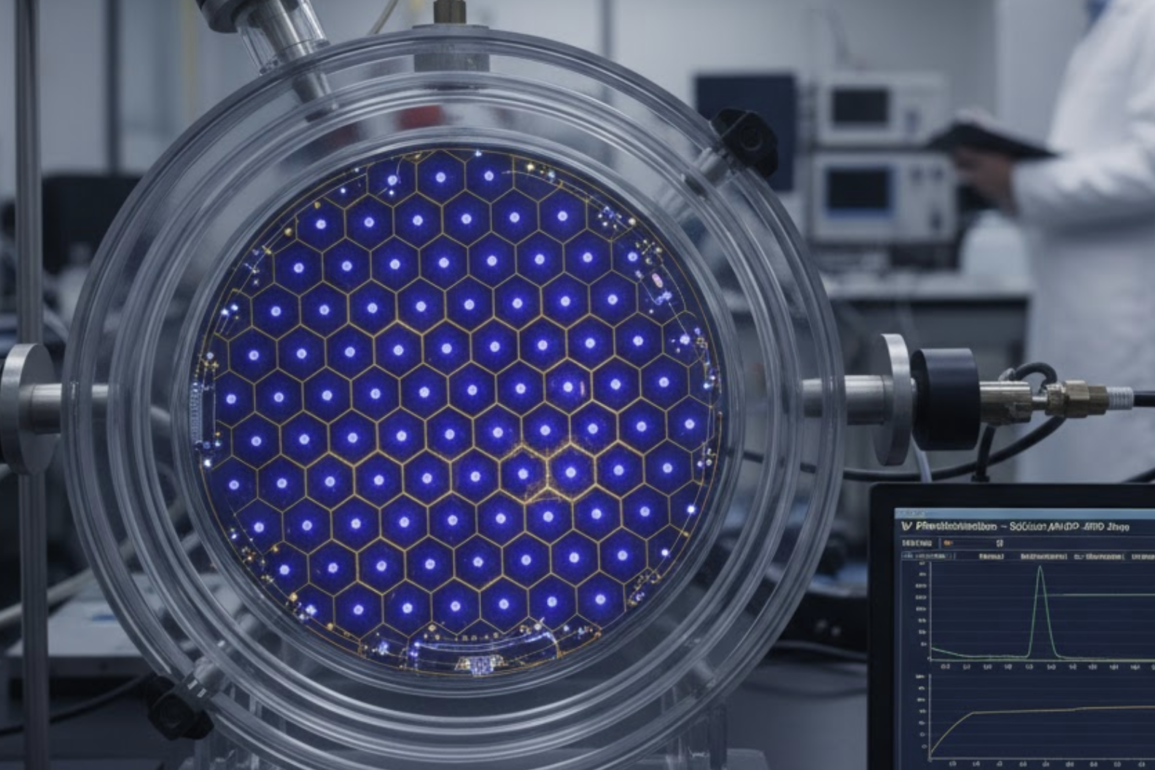Researchers at the U.S. Army’s DEVCOM Army Research Laboratory have developed a new numerical model designed to improve the performance of avalanche photodiodes (APDs) for near-ultraviolet (NUV) light detection — a key step toward creating more sensitive optical sensors for defense, environmental monitoring, and industrial use.
Geiger-mode avalanche photodiodes (GM-APDs) are among the most sensitive light detectors available, capable of detecting single photons — the smallest possible packets of light — through a process known as avalanche multiplication.
In this process, when a photon is absorbed by the photodiode, it creates an electron-hole pair that can trigger a chain reaction of electrical charges, producing a measurable pulse. The ability of these diodes to operate at “breakdown voltage,” where this reaction becomes self-sustaining, makes them uniquely suited for ultra-low-light environments.
However, optimizing these devices for longer, higher wavelengths presents a persistent challenge. “APDs with much thicker absorber layers (10’s of microns) must be utilized to improve the NUV response, which necessitates switching from a conventional PIN architecture (usually <3μm thick) to a separate-absorption charge-multiplication (SACM) architecture,” explains Dr. Jonathan Schuster, who led the study. “However, this involves unique challenges such as deviating from existing front-side absorber SACM architectures to a very thick backside one.”
Published in the IEEE Journal of Quantum Electronics, Dr. Schuster’s study outlines how the team used a calibrated 4H-silicon carbide (4H-SiC) material library to simulate the performance of advanced APD architectures.
Silicon carbide is particularly effective for detecting deep-ultraviolet (DUV) light, around 280 nanometers, but becomes less efficient at higher wavelengths where absorption weakens. The team’s goal was to model new structural designs that could overcome this limitation while maintaining single-photon sensitivity.
The researchers designed two separate SACM APD configurations — non-reach-through (NRT) and reach-through (RT) — each optimized for different wavelength ranges and operational constraints.
According to Dr. Schuster, the NRT-SACM design achieved a unity-gain quantum efficiency (QE) of up to 32%, while the RT-SACM model reached 71% for photons with a wavelength of 340 nanometers. “These designs also maintain a large electric field in the multiplication layer for Geiger-mode operation,” the study notes, a key requirement for reliable photon detection.
“For the NRT-SACM case, it was determined that the doping profiles must be engineered such that two competing mechanisms are balanced: maximizing the minority carrier diffusion length in the absorber layer (AL) while minimizing the corresponding potential barrier at the AL/charge layer (CL) interface,” Dr. Schuster says. “Conversely, in a RT-SACM architecture, it was determined that a narrow range of total charge in the CL properly modulated the electric field to be non-zero in the AL and sufficiently large in the multiplication layer to operate above avalanche breakdown.”
The team’s findings provide a new design framework for GM-APDs capable of single-photon counting in the NUV range. Yet the researchers caution that “CL designs in APDs are inflexible with respect to deviations in layer thickness or doping,” making fabrication a delicate and complex process.
4H-SiC avalanche photodiodes are already used in solar-blind ultraviolet detection, combustion analysis, and atmospheric monitoring. With this model, scientists may now have a tool to design even more sensitive detectors — capable of identifying faint ultraviolet signatures invisible to the human eye, and perhaps one day, even single photons emitted in space or on the battlefield.




